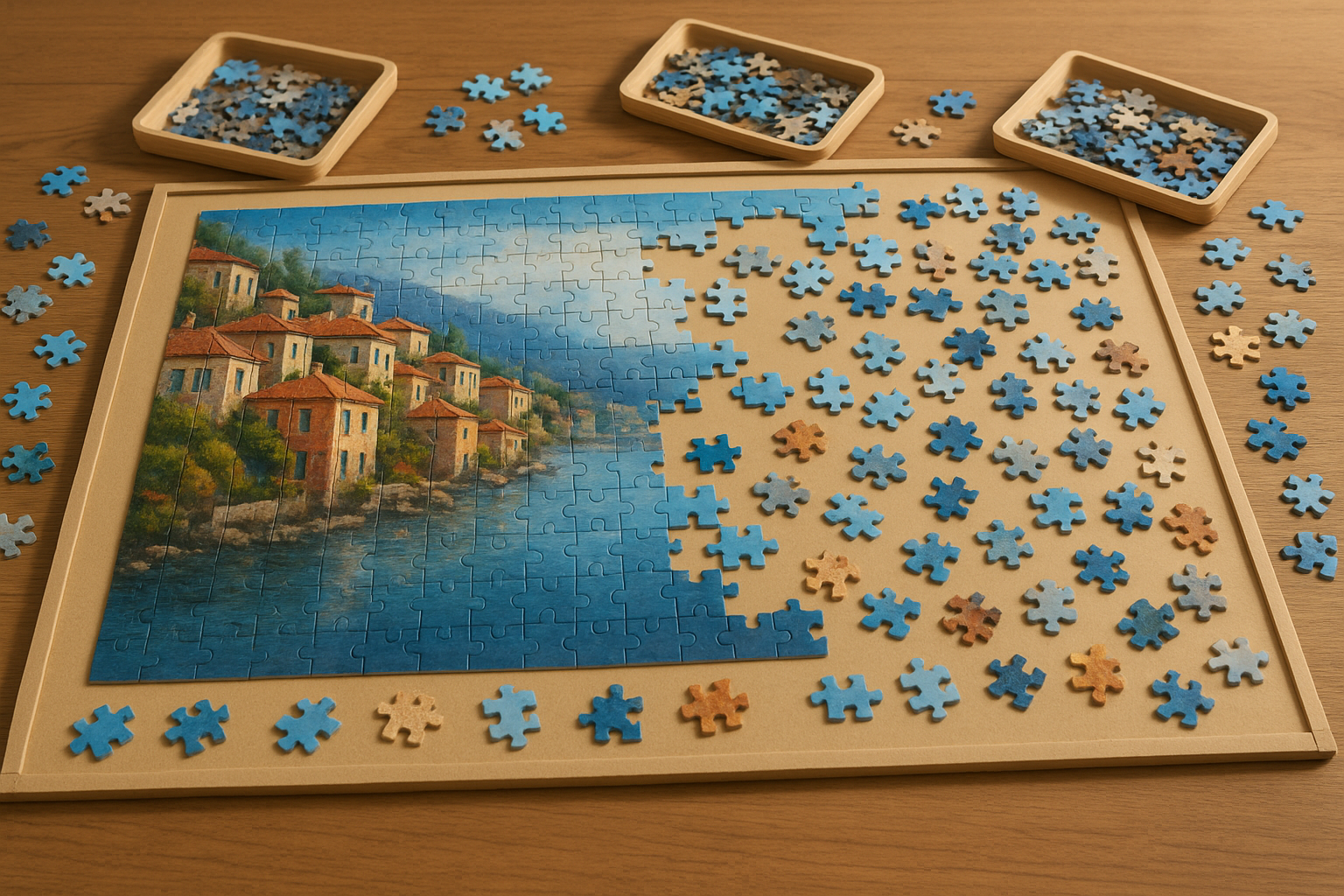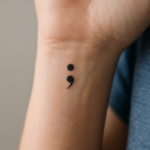In recent years, the humble puzzle board has become an essential item for anyone who enjoys jigsaw puzzles. Once considered an optional accessory, it’s now seen as a must-have tool that makes puzzling more organized, comfortable, and relaxing. A puzzle board provides a dedicated, stable surface that keeps pieces secure and easily accessible — allowing enthusiasts to fully enjoy the creative challenge without worrying about clutter or disrupted progress.
The appeal of a puzzle board lies in its simplicity. It transforms a regular table or floor space into a purposeful zone for calm concentration. Whether you’re working on a 500-piece scene or a 2,000-piece masterpiece, a good puzzle board turns the experience into a smoother, more mindful pastime. In a world filled with screens and constant distractions, sitting down at your puzzle board feels like pressing “pause” on the chaos — a small but valuable investment in peace of mind.
What Exactly Is a Puzzle Board?
A puzzle board is a flat, portable surface specifically designed to hold jigsaw puzzles in progress. It provides a secure space where pieces won’t slide away, even when you need to move the puzzle. Some puzzle boards come with sorting trays, raised edges, or felt surfaces that prevent small pieces from slipping to the floor.
There are a few common types of puzzle boards. Standard boards are simple flat platforms made from wood or foam-backed materials. More advanced versions feature drawers or foldable panels for easy storage. Portable puzzle boards are often lightweight, making them perfect for smaller spaces or coffee tables. For dedicated puzzlers, deluxe models with rotating bases or built-in covers offer an extra layer of convenience.
Materials play an important role in quality. Wooden puzzle boards, for example, are durable and often used for large puzzles, while fabric-covered or felt boards are ideal for smooth handling and gentle grip. Many designs combine both—sturdy frames and textured surfaces—to create a functional yet appealing puzzle station.
Why Every Puzzle Enthusiast Needs a Reliable Puzzle Board?
A reliable puzzle board isn’t just a luxury; it’s a game-changer for anyone serious about puzzles. It’s the difference between constant frustration over lost pieces and calm, uninterrupted focus. By providing a dedicated surface, it allows puzzlers to sort, organize, and build efficiently without taking over an entire dining table or kitchen counter.
One of the main benefits is space-saving. With a portable puzzle board, you can easily move your project from one room to another without dismantling your work. This is particularly handy in smaller homes or shared living spaces. Mobility is another major perk — a puzzle board can be carried, tilted, or stored under a couch when not in use, keeping your work safe from pets, kids, or accidental spills.
Comfort also improves drastically. The right puzzle board brings the puzzle closer to eye level, reducing back and neck strain during long sessions. This means more time can be spent immersing yourself in the quiet joy of assembling each piece, making puzzling a more relaxing and ergonomic hobby.
Popular Styles and Features of Modern Puzzle Boards
Today’s modern puzzle boards combine both practicality and design. Foldable boards are highly popular because they save space and protect the puzzle when closed. Many puzzle enthusiasts prefer portable boards that feature built-in handles or lightweight construction for easy movement from room to room.
Adjustable puzzle boards add another level of comfort. Some models tilt like an artist’s easel, which helps reduce glare and provides a better angle for viewing. Others include rotating surfaces, making it easier to reach pieces from different sides without constantly shifting your position.
Differences in size and surface also matter. Puzzle boards come in various dimensions suited for everything from small puzzles for beginners to massive multi-thousand-piece challenges for experts. Surface textures vary from smooth melamine to soft felt or linen coverings — the latter helps grip pieces lightly while allowing them to slide just enough for precise placement. Choosing among these styles depends on your needs, space, and personal preferences.
Choosing the Right Puzzle Board for Your Space and Style
Selecting the right puzzle board involves more than just picking one that looks appealing. The best choice depends on how often you puzzle, how much space you have, and your preferred working style.
Dimensions are crucial — make sure your puzzle board comfortably fits both your workspace and the puzzle sizes you enjoy most. If you usually tackle large puzzles, opt for a board that provides extra room around the edges for sorting and assembly. Surface material is another important factor; wooden and fiberboard options are sturdy, while felt and fabric surfaces are better for grip and gentle handling.
Portability might also influence your decision. If you like puzzling in different rooms, a lightweight board with built-in handles will make life easier. Storage options, such as detachable trays or foldable edges, can help keep things neat between sessions. Balancing budget, quality, and design style is key — sometimes a mid-range puzzle board delivers just as much satisfaction as the top-tier models, especially if it fits your specific routines and space.
Caring for and Maintaining Your Puzzle Board
A well-maintained puzzle board will last for years, even with frequent use. To keep it in excellent condition, clean the surface gently with a soft, dry cloth after each use. If your board has a felt or fabric texture, a lint roller or small handheld vacuum can help remove dust and stray puzzle fuzz. Avoid harsh cleaners or excessive moisture, as these can warp the surface or damage finishes.
Storing your puzzle board properly is equally important. Keep it flat or vertically upright in a dry area to avoid bending. If it’s foldable, make sure it’s fully secured and stored away from direct sunlight or heat. By caring for it regularly, your puzzle board stays smooth, secure, and ready for many relaxing sessions to come.
Creative Ways to Use a Puzzle Board Beyond Puzzles
While the puzzle board was designed for jigsaw enthusiasts, its versatility goes far beyond that. Many people use it as a craft surface for painting, quilting, or embroidery because of its stable, comfortable workspace. Others repurpose it for board games, family card nights, or even as a makeshift drawing board for kids.
The board’s portability makes it great for family bonding. It encourages shared, screen-free activities — a rare gem in today’s digital era. Turning the puzzle board into a multi-use surface adds even more value to something already so practical, transforming it into a creative hub for everyone in the home.
Conclusion
A puzzle board might seem simple, but its impact on the puzzling experience is remarkable. It transforms how people approach one of the most timeless and calming hobbies. From providing comfort and organization to offering flexibility and protection, this unassuming tool elevates every puzzle session into a smoother, more enjoyable activity.
Beyond the puzzle itself, a quality puzzle board represents the value of focus and relaxation. It’s a small addition that makes puzzling easier, tidier, and more joyful for both beginners and seasoned enthusiasts. Whether used daily or occasionally, investing in a durable puzzle board enhances not only your puzzles—but the peaceful moments they help create.
My name is Mustafa, and I have been blogging for over 5 years. I am passionate about sharing complete, accurate, and helpful information with my readers. Along with managing content on The Matcha Read, I also contribute blog posts to premium websites. My goal is to provide valuable insights in a clear and easy-to-understand way, so every reader walks away with useful knowledge.










